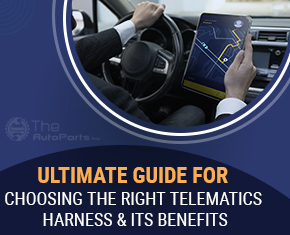There has been considerable interest in the enhanced productivity and efficiency obtained by deploying vehicle telematics.
Fundamentally, telematics is the integration of computer & wireless telecommunications technologies with the aim of improving corporate operations and services through the effective transmission of information over enormous networks.
Vehicle telematics initially focused on employing global positioning satellite (GPS) monitoring to follow the movement and activity of cars in real-time, as well as driver behavior. Fleets had data that could be used to lower operating costs and boost customer service when merged with fleet management technology.
Fleet service personnel may now handle vehicle issues proactively thanks to advancements in vehicle telematics & fleet management technologies that enable real-time vehicle diagnostics.
Telematics devices can electronically monitor and report on a specific vehicle’s usage and how that impacts its “health.” These systems also send event codes that can indicate operator abuse and vehicle fault codes that signal repairs that need to be made. Using this data, the preventative maintenance schedule for the vehicle may then be suitably adjusted.
When Do You Need Telematics Harness?
The telematics device is great because it plugs right into the OBD II port of the car, but occasionally a harness is needed. A fleet could require a harness for a few different reasons. They may wish to keep the OBD port free or they might have to place the telematics device out of the way and out of sight. A T-harness makes it feasible to attach the Geotab telematics device but still maintain the OBD port open for usage, such as for a scan tool.
Today’s automobiles offer a variety of data via the diagnostic port, although not all of them. Effective fleet management may benefit from this, particularly if you have the capacity to access this data in real-time. By selecting the proper harness for your GO device, you may easily access the vehicle’s data bus, maximizing the richness of telematics data while also minimizing installation time.
The data bus can provide valuable information such as:
- RPM
2. Odometer
3. Various engine temperatures
4. Engine hour data
5. Seatbelt usage
The Auto Parts Shop provides a choice of T-type harnesses for different automobiles. These harnesses enable the GO gadget unit to be attached in a position that is best for GPS signal while, for obvious safety reasons, avoiding vital items like your gas pedal, brake pedal, and steering control.
The harness also makes it possible for automakers to connect to the vehicle’s diagnostic port without removing the telematics device. The right harness decreases liability and the chance of tampering. When the harness is too lengthy for the vehicle network, reflection, and miss-wiring problems might arise. Harnesses that are used poorly can lead to a variety of mechanical and electrical problems, increasing your responsibility.
The Benefits of Choosing the Correct Telematics Harness
The appropriate telematics harness is crucial since it increases the depth of the telematics data, lowers your liability, and speeds up your installation. The three primary advantages of selecting the proper telematics harness are discussed in this article along with how it might affect things.
Data Richness
The “proprietary” data harness offered by the telematic harness gives end users the most thorough and comprehensive data available. For instance, it enables your GPS tracking equipment to access the manufacturer’s exclusive data bus, which is often where the following data is stored:
- Odometer
2. Seatbelt
3. Engine-hour data
Streamline Installation Process
When conducting tasks like following the optimum travel path, installing the GPS tracking device in the ideal spot is made easier by using the right harness. Additionally, for obvious safety reasons, it is crucial to assist stay clear of the gas and stop pedals, steering wheels, and busy areas. T-type harnesses assist prevent GPS tracking detection, reduce tampering, and enable mechanics to physically scan automobiles.
Liability Reduction
Harnesses solely function. Miswiring, over-current, or reflection problems, which can occur when a harness is too lengthy for the vehicle’s network, are not a possibility. Harnesses that are improperly connected or built can result in a variety of mechanical and electrical problems and significantly raise a company’s liability. Working with a trustworthy company that is dedicated to technical innovation is crucial for end consumers.
The Auto Parts Shop is interested in improving the way you conduct business; we are not just another GPS Fleet Tracking company. We collaborate with you to make sure you quickly realize the ROI of our solution and fully appreciate the advantages GPS tracking can provide.
